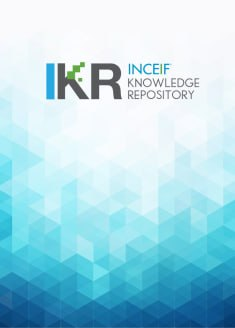
Browse by Author "Mohamed Hisham Hanifa"
Results Per Page
Sort Options
- PublicationDaily traders' and institutional investors' wealth effect upon sukuk and conventional bond announcements: a case study of Malaysian firms using event-study methodology and wavelet analysisMohamed Hisham Hanifa; Abul Mansur Mohammed Masih; Obiyathulla Ismath Bacha (Bursa Malaysia & Malaysian Finance Association, 2014)
The last decade has witnessed a rapid expansion of Islamic financial instruments with a notable proliferation of Islamic investment certificates called sukuk. In spite of the expansion, research to appraise their growth implications remains limited. This paper investigated the structural differences within sukuk and conventional and their implications on investor return reactions. It also looked at the investors' different decision making time horizon dimensions in response to the respective debt security's announcement. Our sample consisted of 158 conventional bonds and 129 sukuk issuers between 2000 and 2013. Event-study methodology and wavelet analysis were used resulting in three major findings. Firstly, market investors perceived sukuk and conventional bonds as different financial instruments. Variations in investor reactions persisted when each sub-category of sukuk and conventional bond were examined separately. Lastly, firm value and shareholder wealth were affected in different ways upon the issuance announcement of of a specific sukuk or conventional bond. Specifically, the equity-like features within convertible bonds and partnership-based sukuk negated institutional investors' wealth, but were due to different 'dilution' arguments. Sukuk created unique wealth effects for corporate issuers, day traders and institutional investors in comparison with conventional bonds.
- PublicationDeterminants of sukuk and conventional debt security offers in the context of trade-off and pecking-order theoriesMohamed Hisham Hanifa; Abul Mansur Mohammed Masih; Obiyathulla Ismath Bacha (INCEIF, 2015)
Sukuk is dominating the Malaysian capital market with strong support from the government, mega-conglomerates and firms. As an important source of firms' financing, sukuk is increasingly catching up with existing conventional debt in terms of transaction volume and the number of deals. In spite of the rising interest among issuers in sukuk offers, research to appraise firm's issuance motives and the subsequent effects on shareholders' wealth upon sukuk and conventional bond announcement remains limited. Hence, through this initial study, firstly, we examine the association of firm specific characteristics with the respective debt security principles offers. Secondly, we also investigate the impact of each debt security offer announcement on issuer overall shareholders’ wealth effects. To address the first issue, we employed the dynamic GMM (both difference and system) analyses for testing the “partial adjustment model” with a view to investigating whether firms maintain an optimal target debt ratio when issuing each debt security principles, consistent with the trade-off theory key predictions. We also used the same model to examine the firm’s specific determinants of target debt ratio in an integrated approach. To address the second issue, we adopt both, “event-study” methodology and “wavelet” analysis. The aim is to examine the true dynamics of relationship between the debt security announcement and the shareholders’ wealth effects, given multi-horizon nature of investors.
- PublicationWhy do issuers issue sukuk or conventional bond? Evidence from Malaysian listed firms using partial adjustment modelsMohamed Hisham Hanifa; Abul Mansur Mohammed Masih; Obiyathulla Ismath Bacha (Elsevier, 2015)
Although sukuk has been dominating the Malaysian capital market, the motivations of the firms issuing sukuk or conventional bonds remained largely unexplored. Using the partial adjustment model, we make the initial attempt, to test a firm's target debt optimizing behavior and secondly, to find the firm specific determinants of target debt ratio using a sukuk or conventional bond issuance 3 dataset. Our sample consists of 120 conventional bonds and 80 sukuk issuers from 2000 to 2012. We employ two recent dynamic panel data estimators, 4 which resulted in three major findings. Firstly, our results provide stronger support for trade-off view based on a firm's optimizing behavior among sukuk and conventional bond issuers, however with different issuance motives. Secondly, issuers of partnership-based sukuk and convertible bonds closely follow the pecking order view, in which the former is chosen based on firms facing a higher information asymmetry cost. Finally, while both exchange-based sukuk and straight bond issuers align towards a particular target, only firms with higher sales growth prefer the former. Reinforced by industry insights, our findings evidence that the sukuk offers bring unique “benefits” to corporate issuers unlike those of the conventional bonds.
Abstract View
2677619
View & Download
199668
